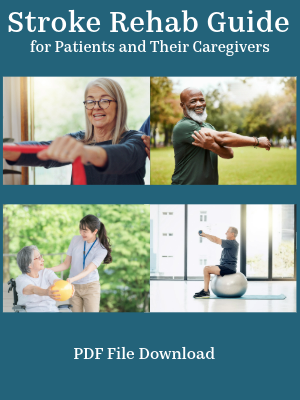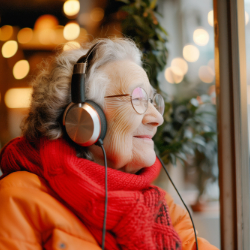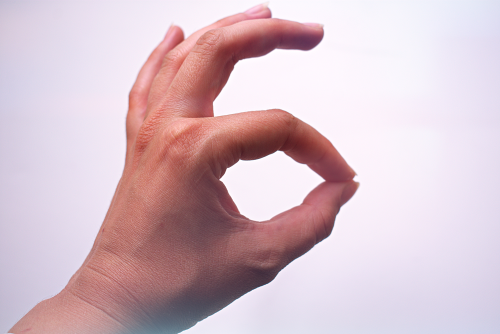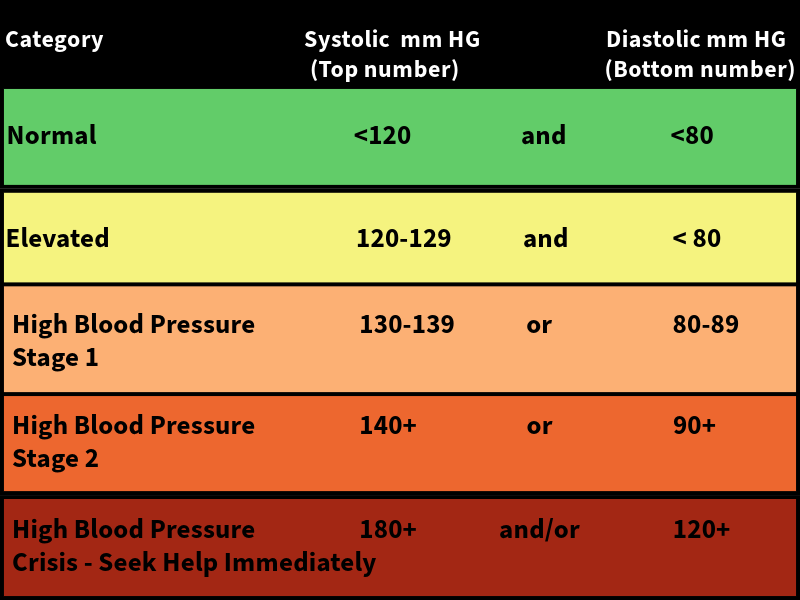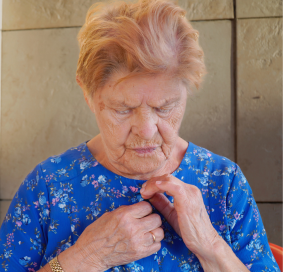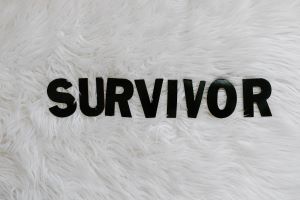Recovery After a Stroke - Tips from Stroke Survivors

This page provides tips submitted from stroke survivors and their caregivers regarding recovery after a stroke. It is not meant to be medical advice but rather tidbits that might be helpful. Always check with your own MD or other healthcare provider to determine what treatment is appropriate for you.
Judo Hand Exercise
by Joseph Hendron (Crumlin Northern Ireland)
Using Judo hand exercise where I closed and then opened my hand helped it work. I then raised my arm to horizontal and closed and opened my hand repeatly until I could do it 100 times at a time. I hope this helps others.
Yoga Before and After Stroke
by GANESH (CHENNAI)
I am stroke survivor aged 46 male. I have really worked hard post-stroke.
My idea: Do yoga every day, it helps. Last March, I could not do yoga exercises. I resorted to doing exercises called pranayam. Now for the last 6 months I go for a walk. The average time is 45 minutes. Coupled with yoga, it has changed my life.
Walking and Pool Exercises

by Geoffrey
I had a stroke in March 2010 where I was paralized completely on the left side of my body. I undertook intensive rehab: in the gym & after discharge walking slowly together with pool exercises. Currently my progress has been excellent with a strong faith and belief in GOD. I walk unaided, sometimes with a walking stick. My memory was not effected at all.
Finger Stretches - Place Your Affected Hand on Your Knee

by Spencer Henry (Dallas, Tx)
In order to stretch your hand and/or fingers, place your affected hand on your knee after sitting. You may need to use the unaffected hand to accomplish this, then slowly lean to the back of the chair. This will stretch the elbow and fingers. After five to ten minutes of holding this position, the fingers and elbow will relax. Repeat as much as desired. Fingers will be softer and not as tight
I'm a stroke survivor at age 44 male.
Active Isolated Stretching
by SERGIO (Sarasota Fl)
Active isolated stretching, Pilates for balance, and very deep massage helped me with recovery after a stroke. I figured this out on my own. I was paralyzed on my left side and was told I would be in a wheelchair the rest of my life. I go to the gym four times per week, I do Pilates 2 times a week and deep massage 2 times a week. I originally did AIS for 3 hours once a week for six months. I now do 1/2 hour on treadmill and go out dancing. I also took neuroaid for two years.
VRT and NeuroEyeCoach

by Carole Urban (Milford, CT. USA)
I did not suffer a stroke but a traumatic brain injury resulting in several issues stroke victims may also suffer from. My vision field was cut down to 60%. After a year I recovered from the other issues, personality changes, problems remembering words, and short term memory loss but my vision never improved. I was told by a prominent doctor that my vision loss was permanent and to learn to live with my vision loss. That was the worst thing I ever heard. I was devastated.
After researching every option available, I learned about Nova Vision. I am so grateful I found this therapy. I believe it is the only type in existence and if anyone has vision loss from a brain injury/stroke I hope they would try this. I followed the instructions and did the therapy at home for about a year. My vision is now 91%.
There are two types of therapy. VRT and Neuro Eye Coach. I have done both and recommend both. VRT is FDA cleared and designed to restore vision loss due to neurological brain damage. The Neuro Eye Coach is a compensation therapy that re-trains the ability to make the most of the remaining vision, so even though I am not 100% after the training I feel that I am. I am a very independent person and I am very happy no one (except my doctors) can tell that I have any type of vision impairment.
Boxing
by Donna (Maplewood, NJ, USA)
They have classes that can be adapted even if you have impaired movement after stroke. You learn to protect your head. You learn hand/eye coordination, strength training, and all the exercises (sit-ups, push ups, running, swimming, curls, jump rope, squats) are good for you, your core, and can be adapted. For balance you learn how to stand with one leg forward and the other leg behind you thus making you feel confident and not wobbly.
Recovery After a Stroke
by Edward (Seabrook, TX)
I have spent a lot of time researching what I should be doing after my encounter with TE TPA, and this stroke rehab website is the best site and info I have found. I am an 88 year old electrical engineer and jet fighter pilot/test pilot. Thanks very much.
Botox
by Rick Porter (Baldwinsville, NY)
I'm currently undergoing Botox treatment coupled with Physical Therapy and home exercises focused on the right arm hand and fingers
Botox-results after one year:
It was determined that I was a good candidate for Botox treatments for spasticity (or tone) in my right arm caused by a stroke. A program for a series of 4 shots at intervals of 16-18 weeks was started.
At the beginning my fingers and wrist along with the lower part of my right fore arm were frozen. My only recovered digit was my thumb which came back after approximately two to three years. My index finger started to return at the beginning of my Botox treatments.
Botox (of which there are 4 types) is essentially a poison. From a strictly non medical perspective, it is used to kill off the nerve endings that control extension or contraction of certain targeted muscles. There are 7 medically approved injection sites that a trained medical professional can select from in the upper limb. No more than 4 sites are chosen to inject at one session. This where you need to select a provider who can explain more fully the nuances of the work, and the risks that are involved.
My progress to date has been a freer movement of previously restricted body parts (fingers wrist and hand). During the first three treatments, near the end of the 16 week spacing, nerve endings would regrow. The spasticity of the treated muscles would return.
Now I am ready for my 4th round. The Botox (the effect of which subsides after the nerve endings killed by the Botox regrow) has been greatly reduced as the flexion muscles get stronger.
I have a daily 4-6 hour routine of heat/passive and active stretching that I now follow. In the beginning this would not have been possible.
Follow Up:
After 4 series of Botox treatments, coupled with physical therapy with an emphasis on my arm, it has taken a year in my case to decrease the tone or spasticity in my arm. The first observable change was in the reduction in the number of and severity of the contraction. I now have a marked difference in what would be called a clench fist and contraction of the forearm that keep the wrist pointed down.
I do not belive that Botox on its own with out other help will single handedly solve or partially cure any affected body part.
In short I believe Botox must be coupled with therapy and home exercises to get any benefit
In conjunction with botox injections, I have therapy to work on my affected arm hand and fingers.
I have found thru experience that this process can not be taken lightly
My expenditure of time averages 6-8 hrs a day of passive and active exercise.
I have used bands for stretching, a hand bike to keep joints moving, various size balls to stretch and and fingers and two splints (one resting or static and am getting a dynamic or moveable splint.
Rehabbing any body part or system for recovery after a stroke is a long slow process and requires determination and perseverance.
Hope this helps
Rick P
Recumbent Cross Trainer (Bike)

by Tina Carter (Cincinnati, Ohio)
The total body exercise, combined with the stability provided in the seat, was priceless! I have relapses, so this is a must have for my home. It quickly aids me in retraining my muscles, and helps to retard atrophy.
Brock String for Vision
by Colin Benbow (Tasmania)
All that is needed is a piece of string and beads. Focus eyes on bead. 2 strings intersecting at bead should be seen. If strings don't cross at bead try blinking or crossing eyes then try again concentrating until they do. This is beneficial when you have blurry or double vision after stroke.
Using Computer Mouse Left-Handed
by John Davis (Hayling Island, UK)
At the age of 79, I had a stroke that mildly impaired my left side. I am right-handed. I trained myself to use the computer mouse left-handed while playing complex patience games on a 27" screen. This required developing smoothness, accuracy, and observation - if you have ever watched someone playing patience and spotted they needed to put the black six on the red seven, you will know what I mean.
I call my approach speed patience as it requires at least 10 movements a minute and tests cognitive ability as well as physical control.
I started because it was clear that the stroke team's physiotherapy was more oriented to a core strength for the elderly approach, working from a playbook of exercises. Three one-hour sessions playing left-handed got me walking normally - toe drop was eliminated and balance improved.
I sail a 29ft yacht, and following RNLI advice always wear fingerless sailing gloves. I noticed that after a four-day trip numbness in the left hand markedly improved - I now have a series of gloves to change the sensation experience a mix of cycling, sailing, and heavy work gloves. Needless to say, the combination of the observation, movement strength and balance required to cope with wind and tide requires a high level of cognitive ability, so I would recommend contacting your nearest Sailabilty centre to other stroke victims.
Is Getting Tips from Others Safe for Recovery After a Stroke?
Information for recovery after a stroke should come from a healthcare professional, but many patients have valuable feedback and ideas that can be used by others such as coping skills, movement tips, or caregiving techniques. Someone who has experienced stroke may have insight that a healthcare professional doesn't have, however, some treatments may be detrimental or ill-suited to a stroke patient, so it is imperative to discuss the safety of any therapy treatments with your own healthcare professional.
If you are looking from support or helpful information from other stroke survivors or caregivers, Reddit has an active stroke forum at https://www.reddit.com/r/stroke/. There are also many Facebook pages dedicated to stroke survivors. Local hospitals often have support groups as well.
Do You Have a Stroke Treatment Recommendation?
Have you had a good experience with your stroke rehabilitation and treatment? Or maybe you're a therapist who treats stroke with some recommendations. Please share your favorite and most effective stroke rehab exercises or treatment tips below. Please note that submissions from others are for informational purposes only and are not professional medical advice, diagnosis, treatment or care, nor are intended to be a substitute. Always seek the advice of a physician or other qualified health provider concerning questions you have regarding your health or a loved one's health concerns.
See the Back Issues of our Newsletter with Tips for Recovery After a Stroke!
Get Our Stroke Rehab Guide

Our stroke rehab guide is designed specifically for patients and caregivers. It's in pdf format and can be immediately downloaded. It includes about
- Stroke Definition & Causes
- Stroke Treatment
- Rehabilitation Information for Physical, Occupational and Speech Therapy
- Exercise pictures
- Q&A from patients and caregivers
- Adaptive Equipment & Techniques
- How to Prevent Another Stroke & More!
Medical Disclaimer: All information on this website is for informational purposes only. This website does not provide medical advice or treatment. Always seek the advice of your physician or other healthcare provider before undertaking a new healthcare or exercise regimen. Never disregard professional medical advice or delay seeking medical treatment because of something you have read on this website. See the disclaimer page for full information.
- Home
- Stroke Resources
- Tips from Stroke Survivors
